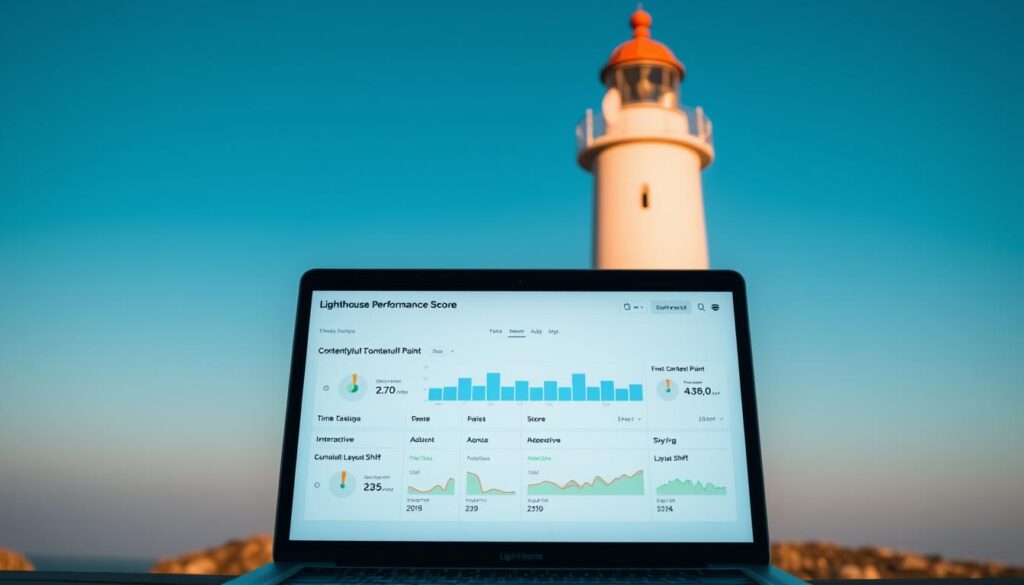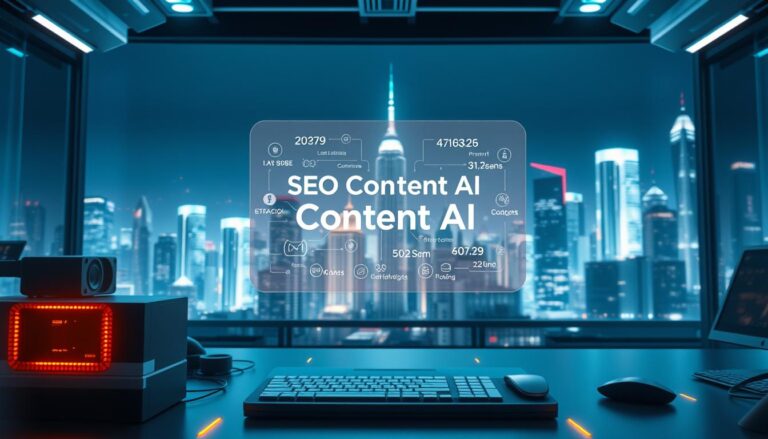In today’s world, having a fast and efficient website is key. Page speed affects how users feel and how search engines rank you.
A slow site can make users leave quickly. This hurts your SEO. Making your page speed better can make users happy. This can help your site rank higher.
By using SEO tips and making your page speed better, you can get more people to visit your site.
Key Takeaways
- Page speed is a critical factor in SEO.
- Optimizing page speed improves user experience.
- Better page speed leads to higher search engine rankings.
- SEO best practices include page speed optimization.
- Faster websites have lower bounce rates and higher engagement.
The Critical Connection Between Page Speed and SEO
Page speed and SEO are very important today. Search engines now focus more on how fast websites load. This is because they want users to have a good experience.
How Search Engines Evaluate Site Load Time
Google and other search engines check how fast websites load. They look at page load time, time to interactive, and total blocking time. These help them see how fast a site is ready for visitors.
To check site speed, they use tools like Lighthouse and PageSpeed Insights. These tools help find ways to make websites faster.
The Impact of Slow Loading Times on Rankings
Slow websites can hurt their rankings a lot. Even a few seconds of delay can lower conversions and user interest. Search engines might rank slow sites lower.
Slow loading times can cause:
- Higher bounce rates
- Lower user engagement
- Reduced conversions
- Negative impact on search engine rankings
Google says, “Page speed is a ranking factor, and it affects user experience.” This shows how crucial it is to make pages load faster for better SEO.
Understanding Page Speed Metrics That Matter
Page speed is key for a good SEO plan. It’s not just about being fast. It’s about making sure users and search engines have a smooth experience.
Core Web Vitals Explained
Core Web Vitals are important for Google. They help see how users feel about your site.
Largest Contentful Paint (LCP)
LCP checks how fast the biggest part of your page loads. This is usually an image or text. Aim for an LCP score of 2.5 seconds or less.
First Input Delay (FID)
FID looks at how fast your page responds to user actions. It’s about the delay from the first action to the browser’s reply. Try to keep FID under 100 milliseconds.
Cumulative Layout Shift (CLS)
CLS checks if your page moves around while loading. It’s about keeping things stable. Aim for a CLS score of 0.1 or less.
Other Important Speed Indicators
Core Web Vitals are important, but so are Total Blocking Time (TBT) and Time to Interactive (TTI). They help find ways to make your page better.
| Metric | Description | Good Score |
|---|---|---|
| LCP | Largest Contentful Paint | ≤ 2.5s |
| FID | First Input Delay | ≤ 100ms |
| CLS | Cumulative Layout Shift | ≤ 0.1 |
Setting Realistic Speed Goals
Setting speed goals means knowing your current speed and what to improve. Focus on Core Web Vitals and other key metrics. This helps make a plan to meet your SEO goals.
Essential Tools for Measuring Page Speed
Measuring page speed is important for a good user experience and better SEO. Web developers use special tools to check how fast a website loads.
Google PageSpeed Insights
Google PageSpeed Insights is a popular tool for checking page speed. It looks at a webpage’s content and suggests ways to make it faster. The score ranges from 0 to 100, with higher scores meaning better speed.

Lighthouse Audits in Chrome DevTools
Lighthouse is a tool in Chrome DevTools that checks web pages. It looks at performance, accessibility, and best practices. It gives a detailed report on how fast a page loads and how it works.
Performance Score Components
Lighthouse’s score is based on six things: First Contentful Paint, Speed Index, Largest Contentful Paint, Total Blocking Time, Cumulative Layout Shift, and Interactive. Knowing these helps find where to improve.
Interpreting Lighthouse Reports
Lighthouse reports give lots of info on a page’s speed. By looking at these reports, developers can find problems and ways to fix them.
Implementing Recommendations
After finding what needs work, developers can make changes. This might mean making images smaller, reducing code, or using browser caching.
Additional Testing Tools
Google PageSpeed Insights and Lighthouse are great, but there are more tools too. WebPageTest and GTmetrix give more insights and tips for making pages faster.
Comprehensive Page Speed Optimization Strategy
A good page speed strategy has many parts. These parts work together to make websites faster. This makes websites better for users.
Prioritizing Optimization Efforts
It’s important to focus on what’s most important for page speed. Look at what slows down your site first. Key areas include:
- Optimizing images and media files
- Minifying and compressing code
- Leveraging browser caching
- Improving server response times
By focusing on these, you can make your site much faster. This makes it better for everyone who visits.
Creating a Speed Optimization Roadmap
Having a plan for speed optimization is key. This plan should list steps, needed resources, and expected results. Important parts include:
- Checking your site’s speed
- Finding what needs work
- Using techniques to improve
- Watching how changes affect your site
With a good plan, you can make sure your efforts are smart and effective.
Balancing Speed with Functionality
Speed is important, but so is how your site works. Make sure making it faster doesn’t mess up how it works. Consider:
- Checking that changes don’t break features
- Testing to see if new problems come up
- Listening to what users say and looking at data
By finding the right balance, you can make your site fast without hurting how it works.
Image Optimization Techniques
Image optimization is key to a better website. It makes pages load faster. This helps with search rankings and keeps users happy.
Choosing the Right Image Format
Picking the right image format is the first step. JPEG is best for photos, PNG for graphics with clear backgrounds. WebP balances quality and size. The right choice can make images smaller without losing quality.
Compression Methods That Preserve Quality
Compressing images makes them smaller. Lossless methods like PNG and WebP keep quality high. Tools like TinyPNG and ImageOptim do this well. Gzip can also make images smaller when sent over the internet.
| Compression Tool | Format Support | Compression Type |
|---|---|---|
| TinyPNG | PNG, JPEG, WebP | Lossy & Lossless |
| ImageOptim | PNG, JPEG, GIF | Lossless |
| ShortPixel | PNG, JPEG, WebP, GIF | Lossy & Lossless |
Implementing Lazy Loading
Lazy loading loads images only when needed. This makes pages load faster. You can use JavaScript or the browser’s support. Make sure it works well to keep users happy.
Minimizing and Optimizing Code
To make web pages load faster, we need to make code smaller and better. This means using different ways to improve a website’s code.
CSS Optimization Strategies
CSS optimization is key to making web pages smaller. We use minification, concatenation, and removing unused CSS to do this.
Minification and Concatenation
Minifying CSS means taking out extra stuff like spaces and comments. Concatenating CSS files means putting many files into one. This cuts down on HTTP requests.
Removing Unused CSS
Getting rid of unused CSS makes files smaller. It also makes web pages load faster.
JavaScript Minification and Deferring
Minifying JavaScript makes files smaller by removing extra stuff. Deferring JavaScript means loading it only when needed. This makes pages load faster at first.
Best practices for JavaScript optimization include using tools like UglifyJS or Terser. Also, use the defer attribute in script tags to delay loading.
HTML Cleanup Techniques
HTML cleanup removes extra characters and comments. We use minification tools and methods for this.
By using these code optimization strategies, developers can make web pages load much faster. This improves user experience and SEO.

Leveraging Browser Caching Effectively
To make your website faster, using browser caching is key. It keeps often-used things in your browser. This means you don’t have to ask the server for them as much. This makes your pages load quicker.
Setting Optimal Cache Durations
Choosing the right time for caching is important. Things that change a lot should be cached for a short time. But things that don’t change can be cached for a long time.
A good idea is to cache static things for at least a week. But it’s even better to cache them for up to a year.
Implementing Cache-Control Headers
Cache-control headers tell browsers how to cache things. They help you control how and when browsers cache resources. For example, the max-age directive tells browsers how long a resource is good for.
Managing Cache for Updated Resources
When things change, you need to update the cache. You can use version numbers or special query strings to do this. Adding a version number to a URL makes the browser get the new version.
Good browser caching makes your site faster. It also helps your server and saves bandwidth. Using smart caching can make your site better for everyone.
Content Delivery Networks (CDNs) Implementation
To make your website load faster, using a CDN is a great idea. A CDN spreads your content on many servers around the world. This means users get your site’s stuff from a server that’s close to them.
How CDNs Improve Page Speed
CDNs make your site faster by cutting down the distance to your content. They store your site’s static stuff at edge servers. This cuts down on wait time and makes your site load quicker.
Here are some big benefits:
- Reduced Latency: CDNs make data travel shorter, so it gets to users faster.
- Improved Load Times: Edge servers make your site’s content quicker to access.
Selecting the Right CDN Provider
Picking the right CDN is key for the best performance. Look at the provider’s server network, cost, and extra features like security and analytics. Cloudflare, Akamai, and Verizon Digital Media Services are popular choices.
Make sure the CDN can handle your site’s traffic and content.
Setting Up Your CDN Properly
Setting up your CDN right means tweaking DNS settings and picking which resources to cache. You also need to set cache expiration times. It’s important to keep an eye on your CDN’s performance and tweak settings as needed.
Checking your CDN’s analytics often can help you find ways to make your site even faster.
Server Response Time Optimization
Server response time is key for page speed. It’s important for SEO. A quick server lets users get what they need fast. This makes for a better user experience and better search rankings.
Choosing the Right Hosting Solution
Finding the right hosting is the first step. Reliable web hosting with enough power cuts down delays. Using a Content Delivery Network (CDN) helps too, by spreading content around.
Look for SSD storage when picking a host. It’s faster than old hard drives. Also, pick a host near your audience to cut down on delays.
Database Optimization Techniques
Keeping your database clean is key. Remove extra data and make database queries faster. Database indexing helps too, by making data easier to find.
Server-Side Caching Implementation
Server-side caching is a smart move. It stores common resources, so your server doesn’t have to work as hard. Tools like Varnish Cache or Redis can help a lot.
Experts say a fast server makes your site better. It keeps users happy and boosts your ranking. Focus on good hosting, database care, and caching to speed up your server.
Page Speed Optimization for Mobile Devices
Most people use the internet on their phones. So, making websites fast on phones is very important. It’s key to make sure websites work well on small screens.
Mobile-First Optimization Strategies
Using a mobile-first approach is crucial. Design for small screens first. Then, make it work for bigger screens too. This way, websites load fast on phones.
Some good ways to do this include:
- Using responsive design to fit different screens
- Optimizing images and videos for phones
- Using smaller fonts and simpler layouts
AMP Implementation Considerations
Accelerated Mobile Pages (AMP) makes the mobile web faster. But, think about the good and bad sides before using it.
Important things to consider are:
- Make sure AMP pages are found by search engines
- Find a balance between AMP and dynamic content
- Check how AMP affects user experience and sales
Testing Mobile Performance
Testing how fast websites work on phones is very important. Tools like Google’s PageSpeed Insights and Lighthouse help find ways to get better.
When testing, think about:
- How fast the page loads
- Resources that slow down the page
- Network problems and slow connections
Advanced Technical Page Speed Optimization
There are advanced ways to make web pages load faster. As websites get more complex, we need new methods to keep them fast. This helps users have a better experience.
HTTP/2 and HTTP/3 Implementation
Using newer HTTP protocols like HTTP/2 and HTTP/3 can really speed up your site. HTTP/2 lets many requests happen at once, making things faster. HTTP/3 uses QUIC to make connections even quicker, especially on slow networks. Switching to these newer protocols can make your site much faster, especially if it has lots of resources.
As noted by
“HTTP/3 is designed to improve upon the performance of HTTP/2 by using QUIC, which reduces the number of round trips required to establish a connection.”
To use HTTP/3, your server needs to support it. So, check with your hosting or CDN to see if they have the latest support.
Critical Rendering Path Optimization
Improving the critical rendering path (CRP) is key to making pages load faster. The CRP is the time it takes for a page to show up on screen. Reducing what blocks rendering and making those things load faster can really help.
- Minimize and compress CSS.
- Defer non-critical JavaScript.
- Optimize the order of resource loading.
By working on these areas, you can make the browser render your page faster.
Resource Prioritization
Resource prioritization means deciding the order of resource loading to speed up pages. By focusing on important resources like CSS and JavaScript first, you make the page interactive sooner. Using preload and preconnect hints helps the browser know what’s most important.
Good resource prioritization makes the page more usable faster. This improves the user’s experience.
Fixing Common Page Speed Issues
Page speed is key for a smooth user experience and better search engine ranking. Many sites face common page speed problems. These can be fixed with smart strategies.
Identifying Render-Blocking Resources
Render-blocking resources stop the page from showing until they load. CSS and JavaScript files often cause this. Use tools like Google PageSpeed Insights or Lighthouse Audits in Chrome DevTools to find them.
These tools show render-blocking resources and suggest fixes. By deferring or asynchronously loading these, you can make pages load faster.

Eliminating Redirect Chains
Redirect chains slow down pages and hurt SEO. They happen when a URL redirects to another, and so on. To fix this, check your website’s redirects and simplify them.
Use tools like Screaming Frog or Ahrefs to find and fix redirect chains. Streamlining redirects boosts page speed and user experience.
Addressing Server Configuration Problems
Server issues can slow down your site. Problems include slow server response times and bad caching. To fix this, upgrade your hosting or use server-side caching.
Also, make your database faster and ensure your server handles HTTP requests well. Fixing server problems improves page speed and user experience.
WordPress-Specific Page Speed Optimization
WordPress users can make their sites faster with the right steps. A quick site makes users happy and helps with search rankings.
Essential Speed Plugins
Choosing the right plugins is key for a fast WordPress site. There are many types of plugins that help a lot:
Caching Plugins
Plugins like W3 Total Cache and WP Super Cache make sites load quicker. They store data in an easy-to-get spot.
Image Optimization Plugins
Tools like Smush and Imagify make images smaller without losing quality. This makes pages load faster.
Minification Plugins
Plugins such as Autoptimize make CSS, JavaScript, and HTML files smaller. This makes your site load quicker.
Theme Optimization Strategies
Picking a light theme is important for speed. Themes with simple designs and fewer requests load faster. Make sure the theme is well-made and doesn’t have extra features that slow it down.
Database Cleanup and Maintenance
A clean database is vital for a fast WordPress site. Regularly remove unwanted data and optimize tables. Use tools like WP DB Manager for these tasks.
By using these WordPress-specific tips, site owners can make their sites faster and better for SEO.
E-commerce Site Speed Optimization
Speeding up e-commerce sites is key for a better user experience. It also helps with more sales and better rankings on search engines. To get the best speed, focus on a few important areas.
Product Page Loading Strategies
Fast loading of product pages is vital. Slow pages can make people leave quickly and miss out on sales. Here are some tips to make product pages load faster:
- Use image compression and lazy loading to make images smaller.
- Use less heavy JavaScript and CSS files.
- Make browser caching work to keep needed resources ready.
| Optimization Technique | Impact on Page Speed | Implementation Difficulty |
|---|---|---|
| Image Compression | High | Low |
| Lazy Loading | Medium | Medium |
| Browser Caching | High | Medium |
Checkout Process Optimization
The checkout process is very important for e-commerce sites. Making it faster can lead to more sales. To improve checkout, make it simpler, use fewer forms, and offer guest checkout.
Third-Party Script Management
Scripts from other sites can slow down your page. To handle them well, try these:
- Use fewer third-party scripts.
- Load non-essential scripts asynchronously.
- Check and update scripts regularly.
By using these tips, e-commerce sites can be faster. This makes users happier and helps your business grow.
Measuring the SEO Impact of Your Page Speed Optimization
To see if page speed optimization works, you need to track its effects. Look at important signs and see if speed changes help your rankings.
Key Performance Indicators to Track
There are key signs to watch for page speed optimization’s success. These signs include:
- organic traffic: Keep an eye on organic traffic. See if speed boosts bring more visitors.
- Search engine rankings: Watch how your site ranks for important keywords.
- Page load time: Always check page load times. Make sure they stay fast.
- Bounce rates and engagement metrics: Look at how users act on your site. Faster sites often get more engagement and fewer bounces.

Correlating Speed Improvements with Ranking Changes
To really see how page speed affects SEO, link speed boosts to ranking changes. Here’s how:
- Analyzing historical data: Use tools like Google Search Console to look at past rankings. Find patterns related to speed.
- Conducting A/B testing: Test different page versions with different speeds. See which one performs better.
- Monitoring SERP features: See if speed changes help you get into special SERP spots, like “Top Stories”.
By watching these signs and links, you can really see how page speed optimization helps your SEO. This helps you make better choices for more improvements.
Conclusion: Maintaining Optimal Page Speed for Long-Term SEO Success
Keeping your website fast is key for SEO success. Search engines love websites that load quickly. This helps your site rank higher.
Keeping your site fast means always checking and improving it. You need to update your strategies as new tech comes out. Also, you must change with user and search engine trends.
Using the tips from this article can help your business grow online. Regular checks with tools like Google PageSpeed Insights are important. They help find ways to make your site better.
Fast websites make users happy and help your site rank better. This leads to more sales and money. Make page speed a big part of your SEO plan for lasting online success.
FAQ
What is the ideal page load time for SEO?
How does page speed affect SEO rankings?
What are Core Web Vitals, and why are they important?
How can I measure my website’s page speed?
What is the difference between Google PageSpeed Insights and Lighthouse?
How can I optimize images for page speed?
What is browser caching, and how can I leverage it?
How can I optimize my website’s code for page speed?
What is a Content Delivery Network (CDN), and how can it improve page speed?
How can I measure the SEO impact of my page speed optimizations?
Related Posts
- Domain Branding Tips for Affiliate Websites: Make Your Name Stick
- Toxic Link Audits & Removal
- Affiliate SEO Strategy for Beginners: Ranking & Earning in 2025
- Best Dedicated Hosting for WordPress: Max Performance for Large Sites
- How to Improve the Ranking of Your Customer Site
- Monetizing Niche Websites with SEO: Strategies That Work
- 10 SEO Tips to Boost Affiliate Site Performance
- Use Customer Reviews to Rank Customer Sites







